This article was originally published in issue #7893 of British Journal of Photography. Visit the BJP Shop to purchase the magazine here.
Within the pages of Héroes del Brillo, the infamous shoeshiners of La Paz are transformed. Captured against the fantastical Neo-Andean architecture of Bolivia’s de facto capital and neighbouring El Alto, they have become superhuman, with glowing palms of light and plumes of coloured smoke. The book, which translates as ‘Shine Heroes’, subverts the status of the thousands of masked lustrabotas who roam La Paz daily searching for work; stigmatised as drug abusers and petty criminals. Many, particularly those who are underage, often orphans or escaping abuse, fall into glue-sniffing and alcoholism. But, for many others, shoeshining is simply one of the few opportunities to make a living, support their studies, or supplement another job. Almost all wear a balaclava or ski mask to conceal their identity and avoid discrimination, even hiding their work from family and neighbours. Yet it’s a disguise that only serves to intensify their disrepute.
Federico Estol learned about the masked shoeshiners from his brother-in-law, who encountered them during a visit to La Paz, and the Uruguayan photographer was instantly intrigued. The estimated 3000 masked shoeshiners operating in La Paz have become somewhat of a phenomenon after the practice emerged in the 1980s, following an economic crisis precipitated by a series of incompetent governments. Many indigenous Aymara and Quechua living in rural areas migrated to La Paz in search of income, and for those without skills or education, shoeshining offers a last resort. And it remains vital for the city’s most disadvantaged residents, a large proportion of whom are children.
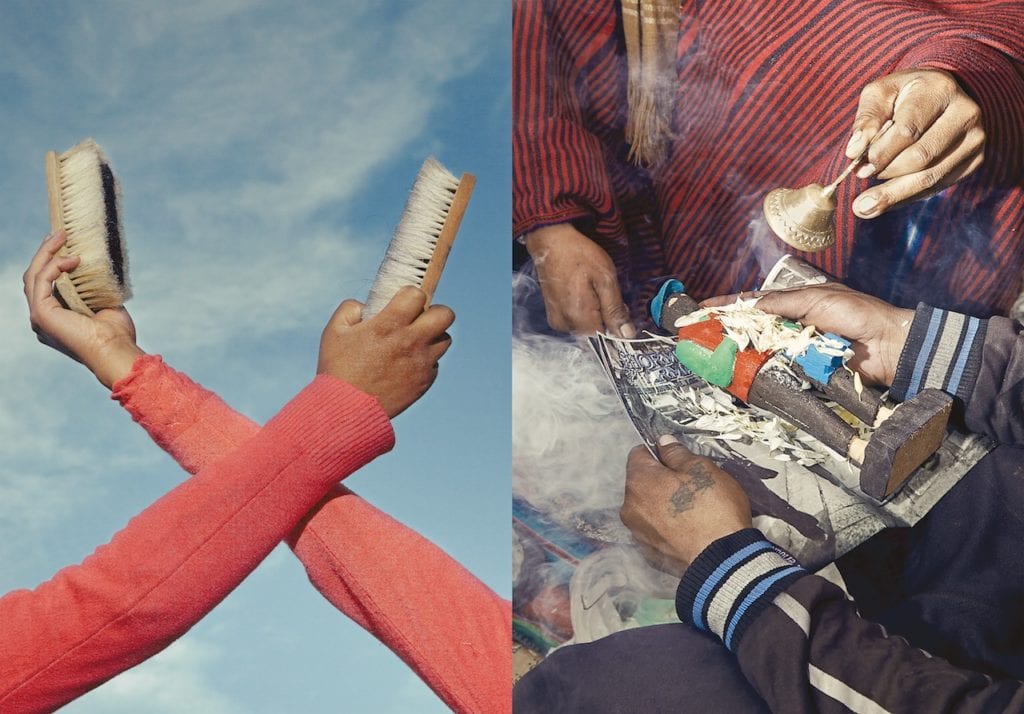
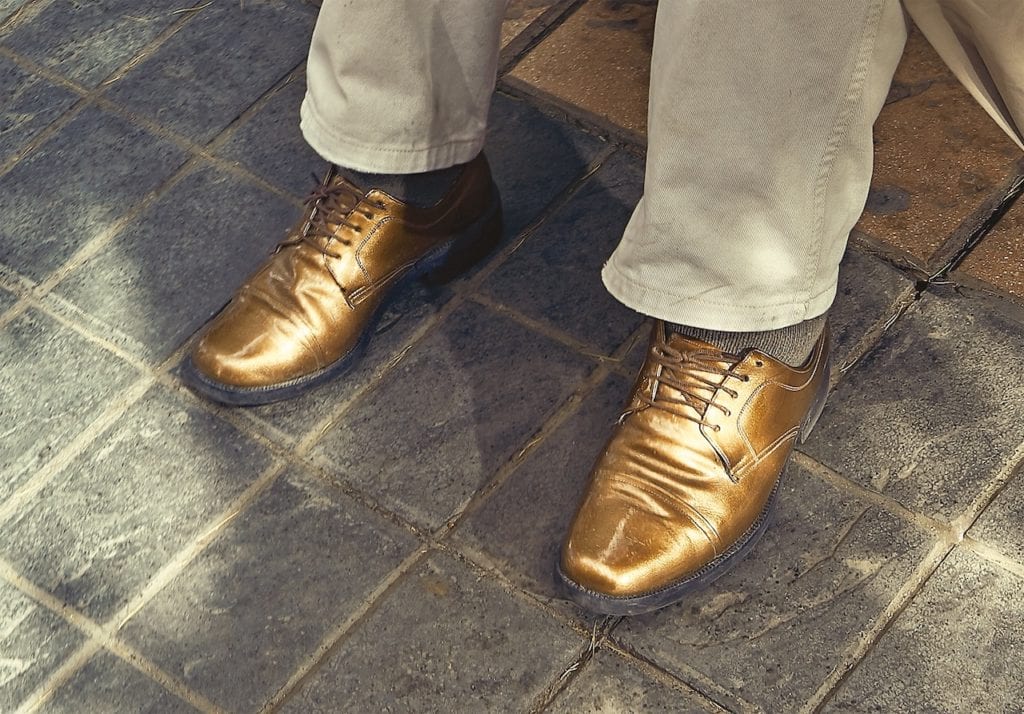
Digging deeper, Estol soon discovered Hormigón Armado, an NGO devoted to supporting and empowering the notorious lustrabotas, particularly its underage members. The organisation (whose name roughly translates as ‘reinforced concrete’, but is also a play on words referring to armed ants, both metaphors for the shoeshiners’ resilience) has facilitated a bimonthly publication, El Hormigón Armado, for more than a decade, which provides the otherwise voiceless community with a platform. Inspired by The Big Issue, 6000 copies are printed and sold by the NGO’s 60 members, with a large percentage of the profits going to the sellers.
For Estol, El Hormigón Armado provided the ideal way to engage with the subject. His commitment to socially engaged work stems from his time as a social activist in the rural communities of his home country, and in La Paz, Estol proposed creating a collaborative, special edition of the newspaper with Hormigón Armado’s members, which they could ultimately sell. It was crucial that the shoeshiners retain control over their depiction and that the project worked to dispel discrimination against them. “My main goal was to make a social photobook, which would contribute to a shift in society’s perception of the shoeshiners working in the street,” he explains.
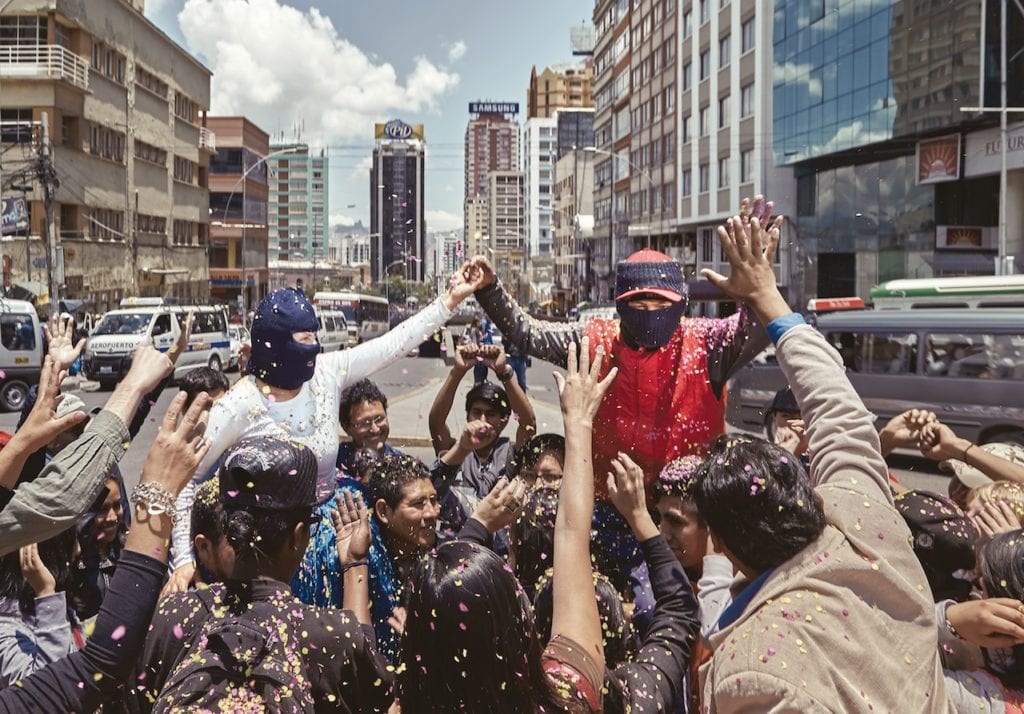
The project evolved from that initial aim. Estol began by photographing shoeshiners involved with Hormigón Armado in their homes, capturing their daily lives with the idea that this would help to reduce the suspicion surrounding them. But he was uninspired. “It looked too much like typical NGO photography,” he says. They decided on a different approach at one of the weekly meetings at which the shoeshiners convene to discuss and plan the newspaper’s upcoming content. Someone had brought an early edition of El Hormigón Armado to one of the gatherings, its cover depicting a shoeshiner wearing a cape with a Superman symbol on his chest. The image sparked a new creative direction. In place of a straightforward documentary approach, the group decided that following the form of a graphic novel would be more powerful. “Perhaps if I had taken the regular approach of a press photographer, I would have contributed to the discrimination by only scratching the surface of the subject,” says Estol. “By taking a fictional approach, I could contribute to social empowerment and change.”
Héroes del Brillo takes that format and traces the fictional everyday lives of a group of shoeshiners with supernatural powers, dedicated to resolving society’s woes. The story evolved from the parallels between shoeshiners and superheroes, of which Estol discovered there are many. Most shoeshiners hide the profession from their friends and families
to avoid association with its negative connotations, leaving home to go to ‘work’ in the city centre, retrieving their clothing and tools from the shoeshiner’s associations, where they eat, and hiding them again before returning home in the evening. Balaclavas allow them to evade recognition while they work; a secret ritual analogous to the approach of many superheroes when concealing their double lives.
Workshops, of which Estol organised several, comprised a central part of the project and the whole process spanned three years; an extended period, asserts the photographer, was crucial to the work. “If you are in a rush then it is impossible to work collaboratively,” he says. “People who work fast are only showing their own perspective.” Estol travelled from his home in Montevideo to Bolivia for one month each year, and during the shooting of the project spent every day driving through El Alto and La Paz in a minibus alongside members of Hormigón Armado to create the images that comprise the final book. He encouraged the shoeshiners to direct the scenes and attempted to facilitate their ideas. “When you work with people outside of the photography world, the ideas can be more fresh and inventive,” he says.
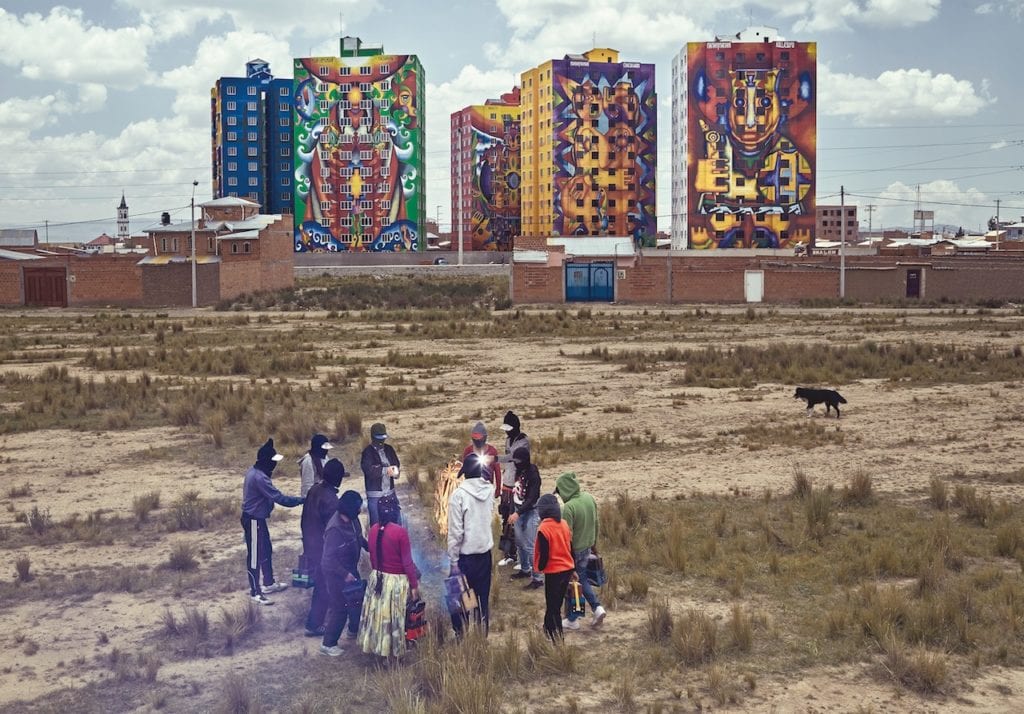
The group’s makeshift inventions fill the pages of Héroes del Brillo, which also includes illustration and collage. To negate the stereotype of shoeshiners having perpetually dirty hands, orbs of light often illuminate their palms, which Estol created by placing a camera flash in the inside sleeves of their jackets. The bursts of light allude to the shoeshiners’ supernatural powers while in other photographs, clouds of colour, created by smoke sparklers, envelop the protagonists. The exuberant Neo-Andean architecture of Bolivian architect Freddy Mamani provides a backdrop to the series, which the group co-opted to create a fictional city, ‘Brillolandia’, or ‘Shine Land’.
In Héroes del Brillo, shoeshiners’ faces are disguised by balaclavas throughout, and this initially posed a problem. The project aims to present the shoeshiners in a positive light, but the garment has myriad negative connotations. The superhero story offered a solution. “This was the only way to represent the mask in a positive light,” explains Estol, who made sure to remove anything associated with discrimination. “I never depict them polishing shoes because it involves being on your knees, which is a submissive position,” he continues. Instead, he alludes to the real-life significance of the business. In Bolivia, having clean shoes is crucial in a professional capacity and, in one image, the people of La Paz recognise the shoeshiners as heroes; an acknowledgement that replaces suspicion.
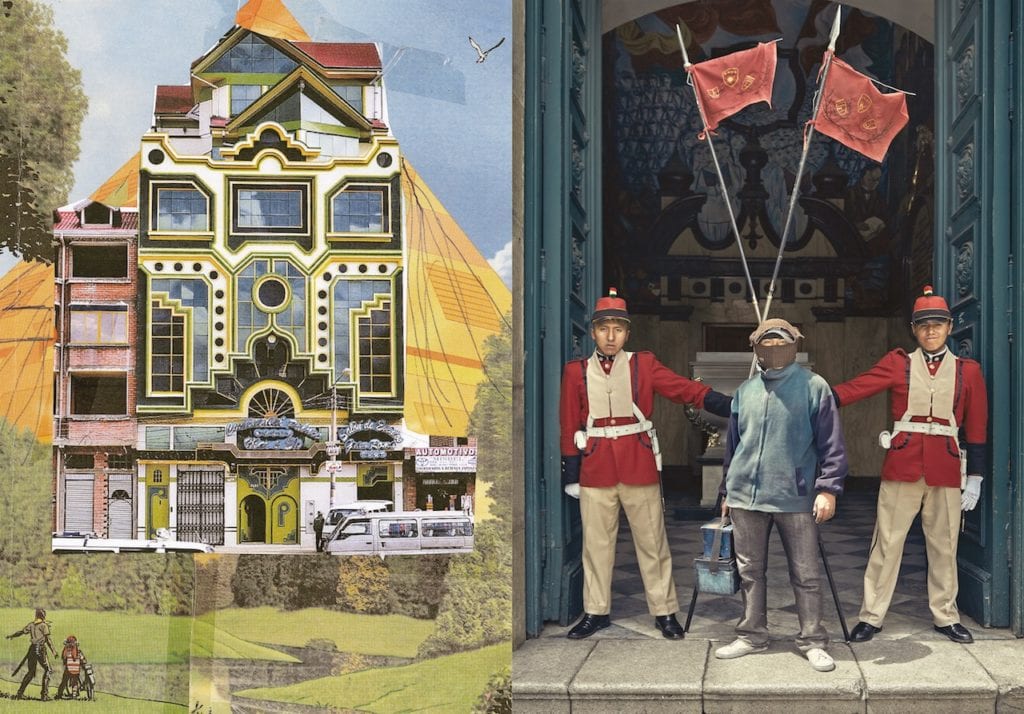
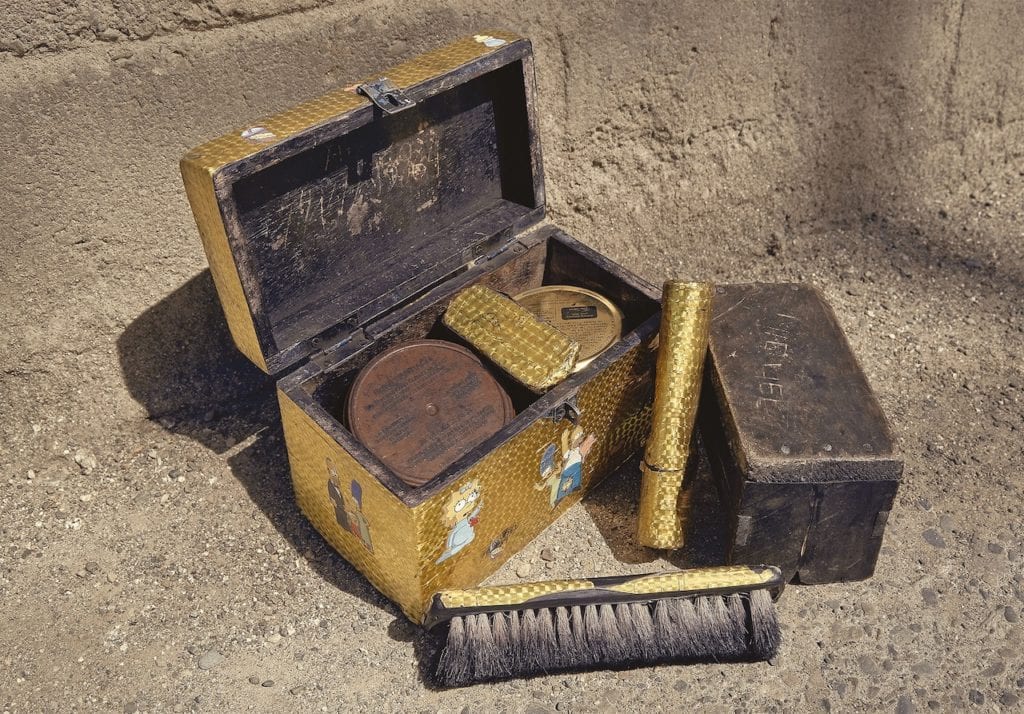
Héroes del Brillo functions on two levels: selling the magazine on the streets of La Paz – for the equivalent price of five shoeshines – works to fight discrimination, and provides an additional source of income to the shoeshiners alongside their other work; but more than that, the creative process empowered all those involved. Estol shares any profits from sales of the work, or awards, with Hormigón Armado. Last year, for instance, he won €5000 at Encontros da Imagem, the photofestival in Braga, Portugal, of which he gave the organisation half.
Social photography can often be straightforward but Héroes del Brillo is not. The publication’s fictional narrative liberates those involved, absolving the subjects from negative stereotypes. Estol collaborates with the shoeshiners to create a representation of their experience: the empowerment they derive from what they do. The graphic-novel format provides room for experimentation, allowing for a new narrative divorced from preconceptions. As Estol observes: “Perhaps fiction can do more than a documentary approach.”
Héroes del Brillo by Federico Estol is available to purchase through the photographer’s website.
